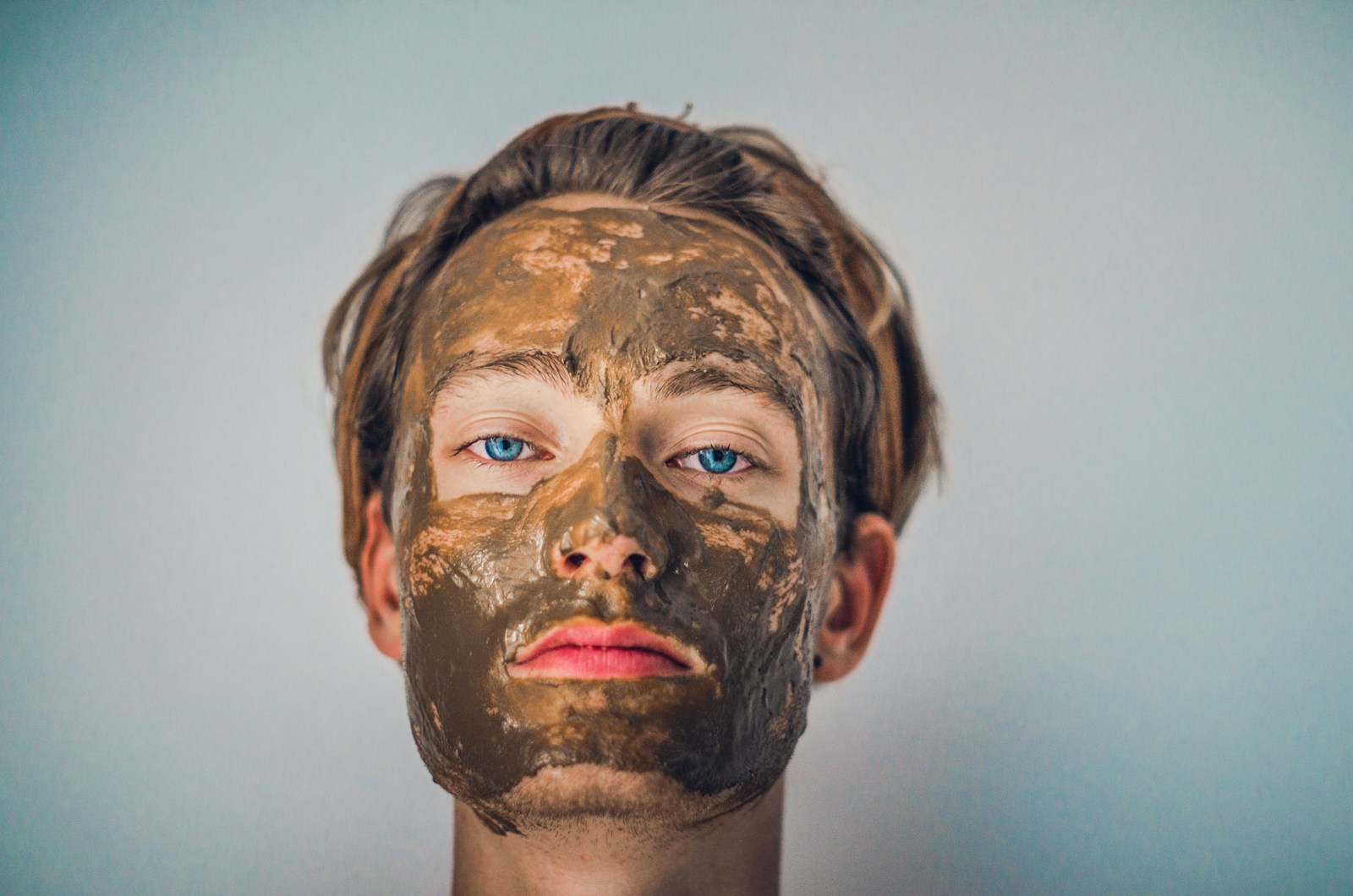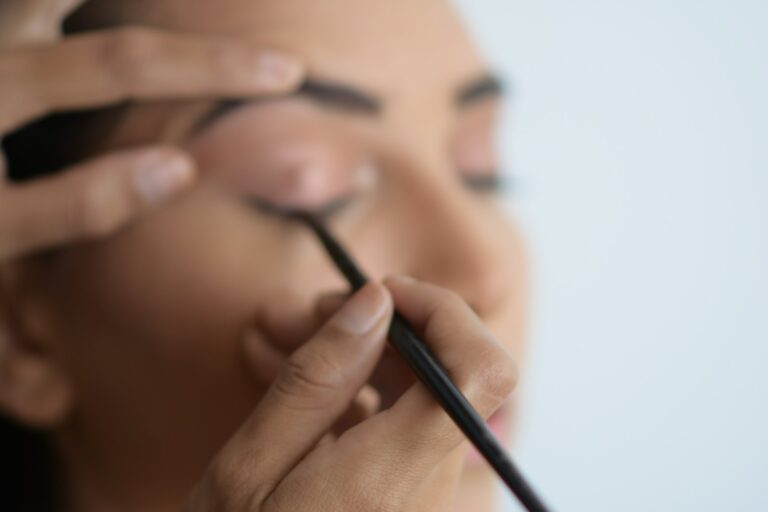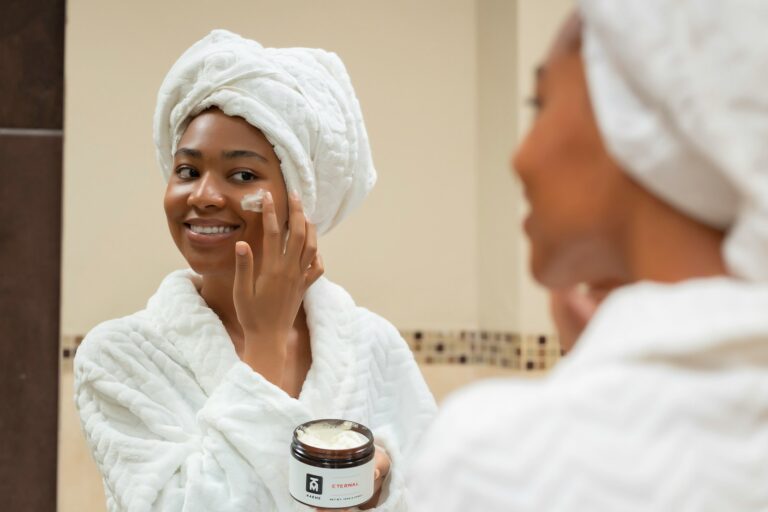It’s crucial to understand that the timing between each step in your skincare routine can significantly impact your skin’s health. Allowing proper absorption of products is key to achieving the best results. For serums and treatments, waiting at least a few minutes before applying the next product can enhance effectiveness. Conversely, rushing through your routine may hinder benefits and even cause irritation. In this post, we investigate into how long you should wait between each skincare step for optimal results.
The Science of Absorption: Why Timing Matters
The Skin’s Penetration Pathways
The skin has several layers, with each layer capable of absorbing products at different rates due to its complex structure. The outer layer, known as the stratum corneum, acts as a barrier that controls the amount of moisture lost and the products absorbed. Only small molecules can penetrate through this outer layer effectively, which means larger molecules, such as those found in heavy creams and serums, may take longer to absorb. Consequently, if you apply multiple products too quickly, the subsequent layers might not have the opportunity to integrate the ingredients properly, leading to diminished effects.
Your skincare routine can mirror the body’s biological processes; just as digestion needs time to break down food, your skin requires the same consideration for absorption. Applying a lightweight serum, such as hyaluronic acid, before a thicker moisturizer allows the former to seep into the skin’s deeper layers. Depending on the formula, waiting about 30 seconds to a minute between these steps can optimize absorption by preventing potential product interference.
The Role of Product Formulation
Product formulations vary significantly; among those, the base ingredients and active compounds play an integral role in how quickly your skin can absorb them. For example, water-based products tend to absorb faster, enabling faster penetration through the skin’s layers. Conversely, oil-based products might create more of a barrier on the skin’s surface. Keeping this in mind allows you to strategize the order of application in your skincare routine. For maximum efficacy, layer your products from the thinnest to the thickest texture.
Some formulations also contain ingredients that require time to activate and penetrate effectively. For instance, products laden with retinol or vitamin C may take a while to settle into the skin, and thus, waiting a few minutes before layering another product can enhance their efficacy. Neglecting this can result in a wasted product and missed benefits.
Layering Like a Pro: The Order of Application
Essential Steps in Your Routine
Establishing a proper order of application allows for enhanced absorption and efficacy of your skincare products. Generally, a good rule of thumb is to apply products from thinnest to thickest. Start with a gentle cleanser to clear away impurities. Follow up with a toner, if you use one, to help balance your skin’s pH and prep it for the next steps. After that, apply serums that address specific concerns such as acne, pigmentation, or hydration. Moisturizers come next, sealing in all the beneficial ingredients you just layered on. Lastly, don’t forget about sunscreen during the day; it’s important for protecting your skin from harmful UV rays.
How to Align Product Types with Timing
Understanding the types of products you’re using and their active ingredients can help you determine the best timing for application. Water-based products like toners and serums should typically be applied first, as they have a lighter texture. Creams and ointments, which often contain oils or heavier emollients, should follow to ensure all that moisture gets locked in. If you’re using treatments with potent active ingredients like retinol or vitamin C, apply them after your toner but before your thicker moisturizers. This strategy maximizes their absorption and effectiveness.
| Step | Application Timing |
| Cleanser | Immediately |
| Toner | 1-2 minutes |
| Serum | 1-3 minutes |
| Moisturizer | 2-5 minutes |
| Sunscreen | 5 minutes |
Applying products in the right order and allowing enough time for them to absorb can significantly enhance your skincare routine. For instance, using a vitamin C serum before your sunscreen can provide additional protection against free radicals while boosting your overall radiance. Similarly, if you’re using targeted treatments for issues like acne or hyperpigmentation, make sure they aren’t layered with incompatible products to avoid irritation. Taking time to let each step settle also allows their benefits to take effect, thus improving your overall skin health.
- Cleanser
- Toner
- Serum
- Moisturizer
- Sunscreen
| Product Type | Ideal Timing |
| Water-based | First |
| Serums | After Toner |
| Ointments | Last |
| SPF | After Moisturizer |
| Active Treatments | Before Moisturizer |
Consider the function of each product as you align them with their respective timing. For example, hydration-focused products should be layered in a way that ensures they don’t interfere with the performance of your actives. Any misalignment can result in compromised effectiveness, leading to a lackluster routine. Following this guide will not only maximize your skincare investment but also result in vibrant and healthy skin.
- Hydration
- Active Ingredients
- Product Types
- Serum
- Absorption
The Ideal Wait Times: Balancing Efficacy and Efficiency
Recommended Waiting Periods for Each Step
To maximize the effectiveness of your skincare products, adhering to specific waiting times between each application can be beneficial. For instance, it’s typically advised to wait at least 30 seconds after applying serums before moving on to moisturizers. This brief pause allows for deeper penetration of the active ingredients, enhancing their impact on your skin. For heavier products like oils or creams, extending the wait time to around 1 to 2 minutes can promote better absorption without interfering with the product’s efficacy.
With toners and essences, a shorter wait time of about 15 to 30 seconds may be sufficient, since these are generally more lightweight and designed for quick absorption. Each step in your routine contributes to the overall efficacy of the regimen, so respecting these intervals can lead to a rejuvenated complexion, elevated hydration levels, and a more radiant appearance.
Factors That Can Affect Timing
Individual skin types and environmental factors can significantly influence wait times between skincare steps. For example, if you have oily skin, a longer absorption period might not be necessary, as your skin type can often take in products more rapidly. Conversely, if your skin is dry or sensitive, you might need to extend your wait time to allow products to fully absorb, ensuring your skin reaps all the benefits. Additionally, external elements such as humidity and temperature can also play a role—hot, humid conditions may accelerate absorption, while cooler, drier environments may slow it down.
Several skin conditions might necessitate adjustments in your routine. For example, if you’re using active ingredients like retinoids or acids, a greater waiting time may be warranted to reduce potential irritation. Any adaptation you make should consider your specific skin’s needs on a daily basis.
- Oily skin can absorb products faster than dry skin.
- Environmental factors like humidity and temperature affect absorption.
- Active ingredients may require longer wait times to avoid irritation.
- Listen to your skin—be flexible with your routine.
The interplay between your unique skin profile and the ingredients in your products can create a tailored routine that works best for you. Any adjustments you make should reflect how your skin reacts to different formulations and wait times. By observing how your skin responds, you’ll be better equipped to balance both efficacy and efficiency in your skincare regimen.
- Individual skin types dictate how quickly to move between steps.
- External conditions impact how fast you should apply products.
- Be aware of how your skin reacts to active ingredients.
- Consistency is key, but flexibility is important in your routine.
Common Misconceptions: Debunking Skincare Myths
All Products Work the Same
One of the most misleading beliefs in skincare is that all products yield similar results regardless of their ingredients or formulation. This notion can lead to ineffective routines, where you might still experience skin issues even after spending significant time and money. Products designed for oily skin, for instance, may contain different active ingredients compared to those tailored for dry skin. Some ingredients work best at certain pH levels or require a specific vehicle to penetrate the skin effectively. Understanding these differences can guide you in curating a routine that genuinely caters to your unique skin type and concerns.
Furthermore, the effectiveness of a product can be deeply influenced by its application methods and timing. For example, a water-based serum functions differently when layered over heavy creams compared to lighter lotions. Some products need time to absorb fully, while others perform optimally in the absence of competing ingredients. By focusing on synergy rather than uniformity, you enhance your chances for visible results.
More Time Equals Better Results
Many may operate under the impression that extending the time you wait between steps leads to better outcomes. While it seems logical that giving products time to absorb would amplify their effectiveness, this isn’t always true. There is an optimal absorption timeframe for most products, and exceeding this can actually hinder their performance. For instance, if you wait too long between applying a serum and moisturizer, the serum could evaporate before the moisturizer seals it in, thus negating some of its benefits.
It’s necessary to strike a balance between allowing enough time for absorption without extending it unnecessarily. For example, moisturizing immediately after using a treatment can help lock in active ingredients and enhance their potency. A good rule of thumb is to wait just enough—generally around two to three minutes between lightweight products—before moving on to heavier formulations. This approach not only maximizes efficacy but also keeps your routine efficient.
Reassessing the belief that longer waits guarantee better results can also reveal the importance of focusing on the quality of ingredients rather than merely the timing. It’s the combined efforts of well-formulated products and the correct order of application that boost efficiency, so honing in on the right products for your skin is far more impactful than extending waiting periods.
Personalized Skincare: Customizing Your Routine
Understanding Skin Types and Their Needs
Effective skincare begins with understanding your specific skin type and its unique requirements. There are generally five types of skin: normal, oily, dry, combination, and sensitive. Each type has distinctive features that influence the products you should use and the timing that best fits your routine. For example, if you have oily skin, you may benefit from lightweight, oil-free moisturizers and exfoliants that help control excess sebum, while those with dry skin may require richer, hydrating products to combat flakiness.
| Skin Type | Key Needs |
|---|---|
| Normal | Balanced hydration and occasional exfoliation |
| Oily | Oil control and non-comedogenic products |
| Dry | Intense hydration and nourishing ingredients |
| Combination | Moisture for dry areas and balance for oily areas |
| Sensitive | Soothing formulas and minimal allergens |
Tailoring your skincare regimen based on these types will enhance your results and address specific concerns efficiently. Being attuned to how your skin responds can guide you in selecting products and determining the timing of your application. After determining your skin type, you should observe how your skin reacts to the products and adjust your routine as needed.
Adjusting Timing According to Lifestyle Factors
Your lifestyle significantly influences how long you should wait between skincare steps. Individuals with busy schedules or those frequently exposed to environmental stressors might have different requirements than someone who can afford to take their time. If you’re constantly on the go, a simplified routine with greater emphasis on efficacy can be beneficial. This might mean applying a toner, serum, and moisturizer in quick succession, as the convenience of a streamlined process could be more effective in gaining compliance with your skincare habits.
- Busy schedules may require quicker routines
- Environmental factors can necessitate additional layers
- Personal obligations impact skincare timing
- Streamlined processes enhance routine adherence
- Consider routine adjustments after lifestyle assessments
Additionally, if your daily activities include outdoor exposure or makeup application, allowing more time between skincare steps is vital. For example, if you’re applying a sunscreen over a moisturizer, waiting at least 10-15 minutes between applications ensures proper absorption and optimal protection. Factors like climate, levels of physical activity, and the products themselves also dictate the ideal timing. After evaluating these elements, you can refine your application process to better meet your skin’s needs.
- Outdoor activities necessitate strong sun protection
- Daily activities may dictate skincare priorities
- Physical exertion can impact product absorption
- Adjustment of timings is key after lifestyle reviews
- Evaluate how activities affect your skincare habits after implementation
Troubleshooting Timing Issues: Signs You Need to Change Your Routine
Identifying Skin Reactions to Product Combinations
Skin reactions might serve as your first clue that something isn’t right within your routine. If you notice increased redness, breakouts, or a burning sensation after applying a specific combination of products, it could indicate that those products are not compatible, or that you’re not allowing enough time for each to absorb properly. For example, layering an exfoliant too soon after a treatment can lead to irritation and sensitivity. Pay attention to how your skin behaves after each step in your regimen—if it feels inflamed or uncomfortable, take a moment to reassess timing and product synergy.
Some combinations, such as retinol with vitamin C, can cause excessive dryness or irritation, especially if applied too closely together without sufficient wait time. Monitoring your skin’s response allows you to fine-tune your routine to achieve the best results. You might also want to keep a skincare journal to track reactions and the timing of your steps, helping you identify patterns that may not be immediately obvious.
How to Modify Your Timing for Better Results
Adjusting the time between each product application can drastically improve your skincare efficacy. For example, if you typically wait just a minute between products, consider extending that to five minutes. This extra time allows for deeper absorption, particularly with thicker formulations like serums or creams that require longer to penetrate your skin. Similarly, if you notice your makeup pilling or settling unevenly, it may suggest that your skincare isn’t fully absorbed, necessitating a longer wait time.
Experimenting with the order of application can also yield better results. For instance, applying a hydrating toner before a serum allows for enhanced absorption of active ingredients, while enabling your skin to absorb moisture effectively. By making small adjustments to timing, you can transform your skincare routine, enhancing not just the performance of the products but also your skin’s overall health and appearance.
Beyond the Basics: Advanced Tips for the Skincare Connoisseur
Once you have a solid routine established, consider fine-tuning it with some advanced techniques that can elevate your skincare game. The following tips allow you to investigate deeper into the intricacies of product interaction and personal preferences, ensuring that your regimen not only meets but exceeds your skin’s needs.
| Tip | Description |
|---|---|
| Check pH Levels | Ensure products are within a compatible pH range to enhance absorption and efficacy. |
| Layering Order | Follow the principle of applying products from thinnest to thickest consistency for optimal results. |
| Custom Mixing | Personalize serums by blending them for targeted treatments, but do so cautiously to avoid interactions. |
| Patch Testing | Always perform a patch test when introducing new ingredients to minimize adverse reactions. |
The Impact of Environmental Factors on Absorption
Factors such as humidity, temperature, and even the pollution levels in your environment can significantly affect how your skin absorbs products. For instance, higher humidity can enhance hydration levels, allowing your skincare products to penetrate more effectively. Conversely, dry or polluted environments may hinder absorption, making it vital to adjust your routine according to your surroundings.
Consider also how seasonal changes can play a role. In winter, for example, you might need to introduce richer formulations to combat dryness. During summer, lighter products may be preferable as they better accommodate your skin’s hydration needs. Taking environmental elements into account can vastly improve the effectiveness of your skincare regimen.
- Environmental factors play a role in how well products work.
- Humidity can increase absorption rates.
- Temperature affects skin permeability.
- Pollution can block absorption and lead to skin issues.
When to Experiment and When to Stick to the Tried and True
Finding the right balance between integrating new products and maintaining a consistent routine can be challenging. You may feel tempted to examine the latest skincare trends or trendy ingredients, but it’s vital to assess whether your current regimen is already yielding positive results. If you experience consistent improvements in your skin, then there’s less reason to introduce unknown variables.
On the flip side, should your skin show signs of stagnation, such as lack of radiance or an increase in breakouts, it might be worth exploring alternatives. Look for ingredients that promise synergistic benefits or formulations that cater specifically to your evolving skin needs. Listening to your skin and being adaptive ensures you leverage the best products without losing your established sense of efficacy.
When incorporating new elements into your routine, consider testing products gradually, in line with your established timing between steps. This offers insight into what works best for you without overwhelming your skin or compromising the effects of your existing products. This approach allows you to enjoy the benefits of innovation while remaining grounded in the effectiveness of tried-and-true methods.
To Wrap Up
Conclusively, understanding how long to wait between each skincare step is necessary for maximizing the effectiveness of your routine. You should allow sufficient time for each product to absorb fully into your skin before applying the next one. This typically means waiting around 30 seconds to a minute between lighter products, like serums, and extending that wait to 2-5 minutes for heavier formulations, such as creams or oils. By doing so, you enable your skin to benefit fully from each ingredient, promoting better hydration, protection, and overall skin health.
Your skincare routine should be a blend of both art and science, tailored to suit your unique skin type and concerns. As you refine your process, pay attention to how your skin responds and adjust your wait times accordingly. Leveraging this knowledge positions you for optimal results while ensuring that your commitment to self-care pays off effectively. With mindfulness and patience, you can achieve the healthy, radiant skin you desire.







